Wrought iron balconies
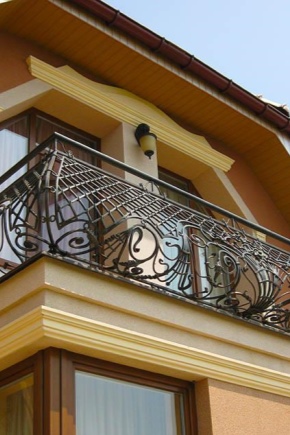
Artistic forging, as a decoration of a balcony, has been widely used for more than one hundred years. And although today lighter, modern, practical and cheap materials have replaced metal, true connoisseurs of forged art remain faithful to this particular element of decor.
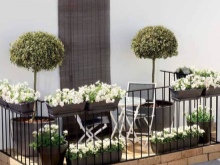
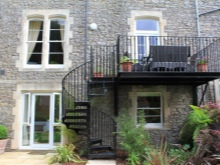

A wrought-iron balcony is not only a reliable protection of the house, it is also its real decoration.
Advantages and disadvantages
The balcony is a continuation of an apartment or house, so I want this place to look no less beautiful, stylish and attractive. The modern abundance of building and finishing materials makes it possible to decorate balconies in an almost exclusive color and stylistic solution. And today balconies are faced with plastic panels, metal and vinyl siding, fiber cement panels, clapboard and other materials.
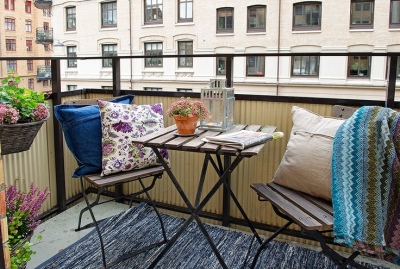
Wrought iron balconies against their background look much more sophisticated, expensive and aristocratic. Even if we are talking about a standard metal lattice, and even more so about a fence of a complex geometric shape, decorated with curved curls and fancy flowers.
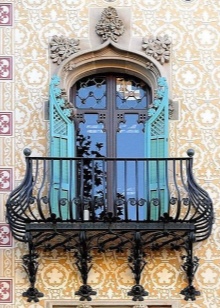
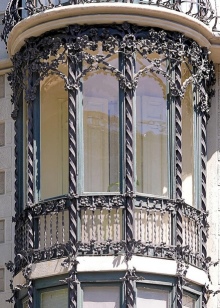
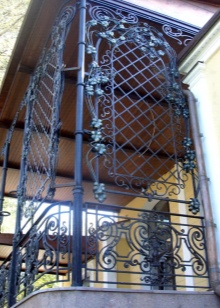
The undoubted advantages of this type of fencing include the following characteristics:
- Resistant to atmospheric precipitation and high humidity. For this, the coating is pre-treated with a special anti-corrosion agent.
- Strength, durability. It is difficult to imagine a more reliable material than metal. Forged structures can be used for more than a hundred years, while their appearance practically does not change with proper care and periodic painting.
- Decorative properties. The boundless imagination of designers and the plastic possibilities of the material allow you to create amazingly beautiful compositions that give the balcony a respectable, well-groomed and modern look.
- Uniqueness. It is almost impossible to see two identical balconies due to the variety of shapes, patterns and other specific features of forging. The same cannot be said for balconies decorated with plastic and metal panels, which sometimes differ only in color.
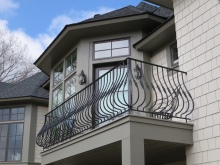
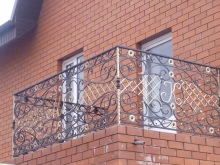
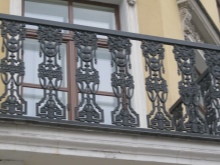
Forged metal has a number of features and disadvantages in comparison with analogs:
- The high cost of both the metal itself and the manufacture of the structure (however, we are talking about a product that has been in operation for more than a dozen years).
- A long manufacturing process (and this moment is relative, if it comes to building your own house, for example, 2-3 months will not play a special role).
- The complexity of the installation (the balcony itself is quite difficult to install).
- The impossibility of glazing the balcony, therefore, forged structures are usually used for balconies that are not intended for household needs.
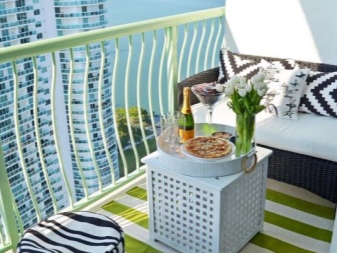
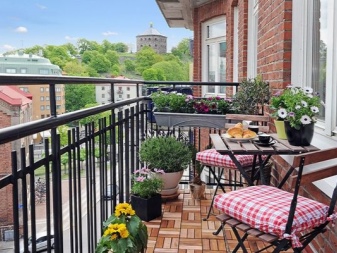
Forged construction is not only the most original, durable and durable option for decorating a balcony, but also the safest. Strong metal rods and forged railings will reliably protect the balcony itself from loosening and deformation, and children or pets from falling from a height.
And how pleasant it is to relax on a beautiful, cozy balcony, decorated with a metal tracery cobweb, beautiful furniture, flowers. A real paradise for relaxing with a cup of tea and pleasant conversation with friends or family!

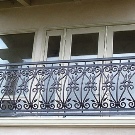

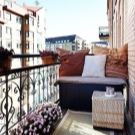
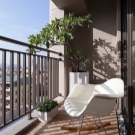
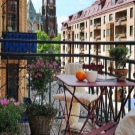
Balcony height
The height of the balcony is determined in each case individually, based on various reasons - the design features of the building, the owner's preferences, optimality, building standards. For example, for small buildings (up to 30 m high), the optimal height is 1 m.
In buildings of greater height, as well as in preschool institutions, the height of the balcony should be in the range of 1.1-1.2 m.
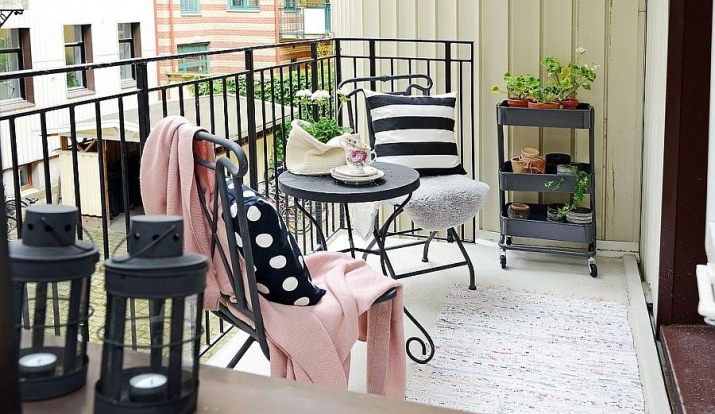
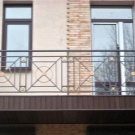
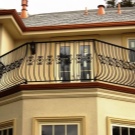
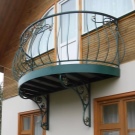
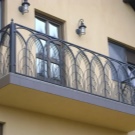
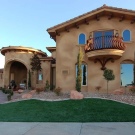
These rules apply to both standard designs and open-top balconies. This option is often performed in order to expand the usable area of the balcony. The most commonly used option is considered to be the expansion or removal along the windowsill. This method allows you to expand the balcony space by about 30 cm on each side. The second option is more material and energy-intensive - expansion along the slab.
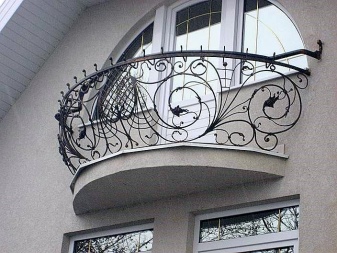
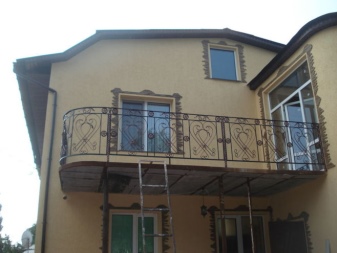
Forms
By shape, wrought-iron balconies can be divided into:
- exaggerated;
- radius;
- in the form of an arc;
- straight;
- mixed form.
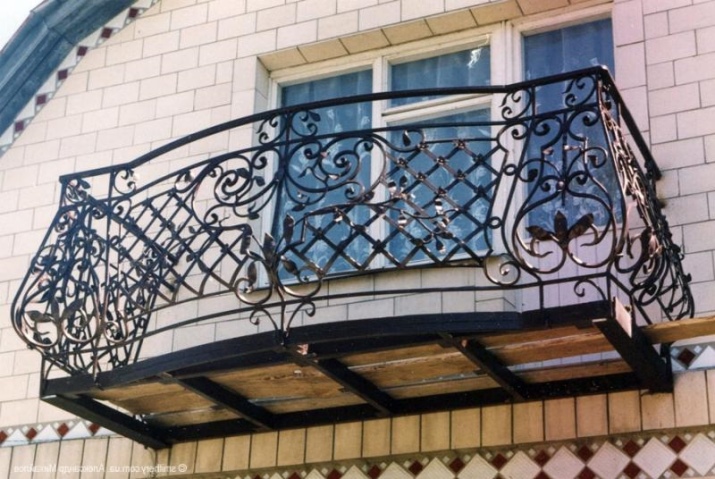


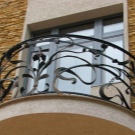
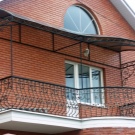
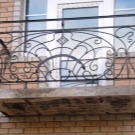
Rectangular balconies are considered a classic option, they are in perfect harmony with any facade, are quite simple to install and practical to use.
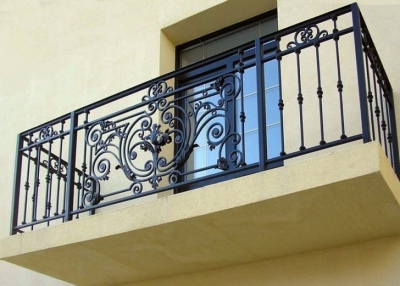
Semicircular or blown balconies look more original and unusual. Mixed-shape models are the most difficult to manufacture and install, but they also look luxurious.
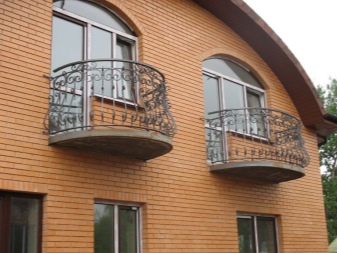
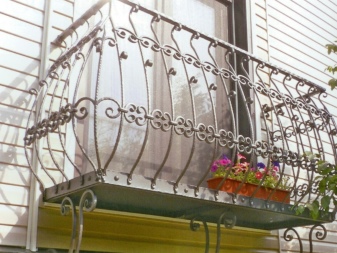
Fences and railings, depending on the shape of the balcony itself, can also have different shapes:
- straight (the classic version most often used for decoration);
- semicircular (an original version that allows you to dilute the strict, laconic style of the building);
- curved (used to decorate balconies of complex geometric shapes);
- corner (such railings protect balconies of an unusual shape).
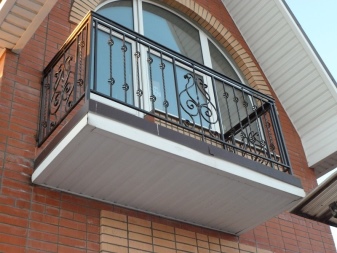

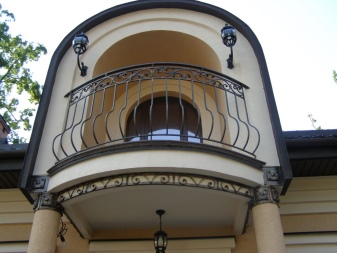
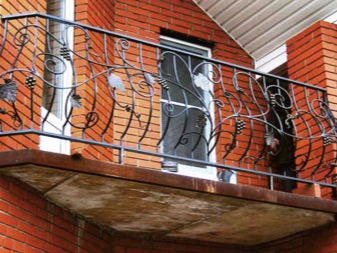
To create such balconies, a flat vertical profile is usually used. It looks great both as a traditional grille and in curved, intricate design details. Used as a material: bronze, aluminum, brass, titanium, other metals and alloys.
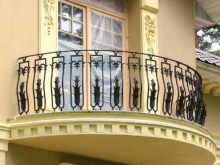
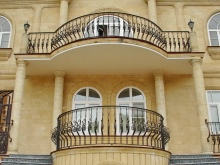
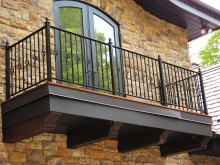
Types of forging
There are two main types of forging: hot and cold. The cold option takes less production time and is more cost effective. Separate elements are made on special equipment, from which a classic lattice or a more complex composition is then assembled.

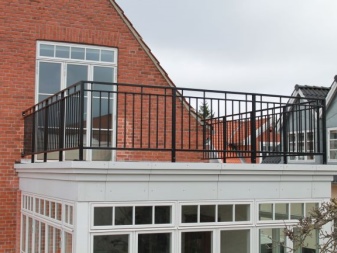
The whole process of work with this method can be conditionally divided into several stages:
- preparation of a sketch;
- calculation and purchase of the required amount of materials;
- production of blanks;
- stamping of elements;
- installation of the structure.
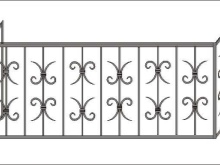


The hot forging method is more laborious, but the end result is also more graceful and beautiful. The finished structure is characterized by high strength and excellent anti-corrosion properties.
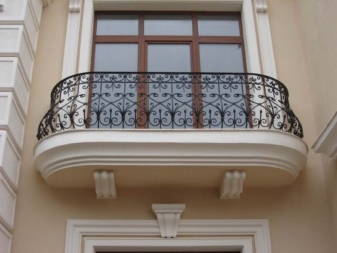
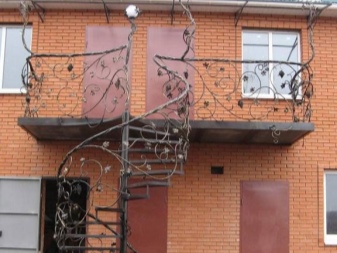
Among the disadvantages of this method are the high cost of the finished balcony and the long production time (up to several months).
Styles
The possibilities of artistic forging are almost endless. With its help, you can turn even the smallest and most inconspicuous balcony into a real work of art. Among the most popular and beloved stylistic trends that are used today to decorate the balcony space, there are several main ones.
Baroque
This style is characterized by some pomp, excess in jewelry. It is characterized by a large number of ridges of various sizes, lush curls and other decorative details.
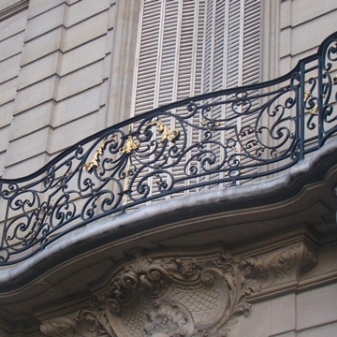
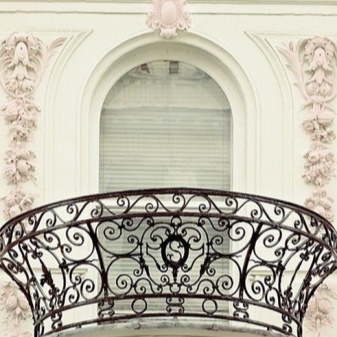
Gothic
A clear, correct geometric composition with a large number of vertical and lancet elements - such a balcony will become not only a stylish and practical decoration for any apartment, but also a great place to relax.
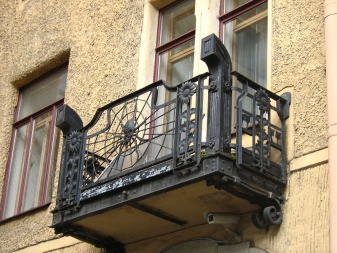
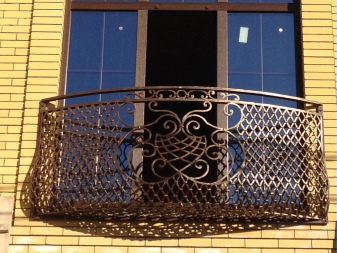
Modern
It is characterized by soft, streamlined shapes and flowing lines. Light, airy ornamental compositions, soft and blurry, are used to decorate the fence.


Russian style
An original design option using traditional ornaments, patterns, as well as a large number of floral elements in the decor.
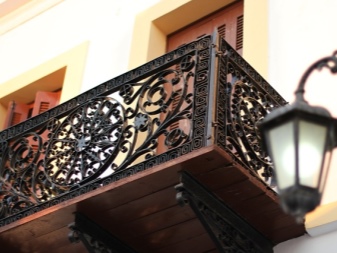

Renaissance
Luxurious decor in the form of a large number of leaves, buds or grape brushes. Often the composition is complemented by elements in the form of eights and pearl threads.
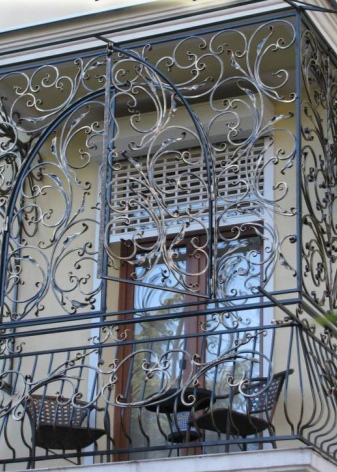
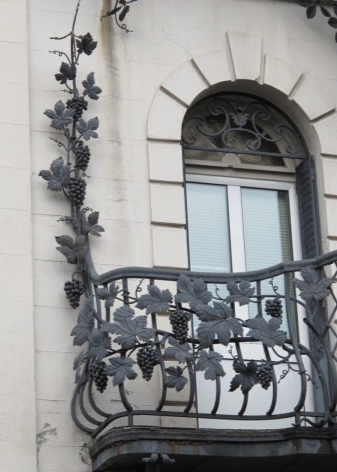
Rococo
This trend is characterized by a large use of curls, large buds, undulating shells, spirals and curls. It is interesting that the finished composition is distinguished by the asymmetry of some details.


French balconies have been very popular in recent years. They are forged fences of impeccable workmanship, with a sophisticated, laconic design and a fairly affordable cost. Many models do not even have their own floor and serve more as a decorative element for a window or balcony than a functional one.
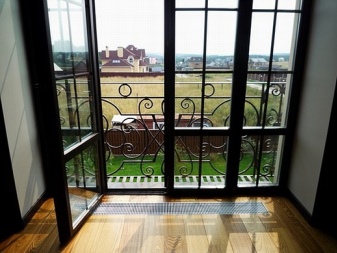
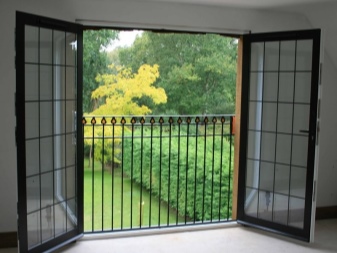
There are several types of French balconies. This can be a small lattice with vertical rods or an elegant fence decorated with floral designs. Outwardly, such a balcony protrudes only slightly from the load-bearing wall.
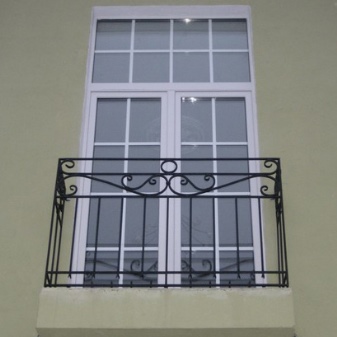
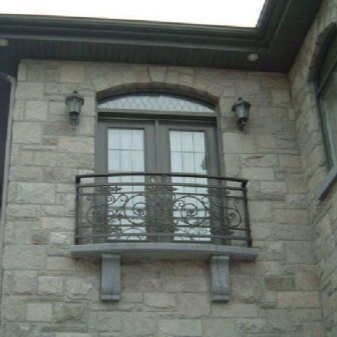
Despite the apparent external elegance and lightness, this structure is still quite massive, therefore, before installing it, it is necessary to provide for a reinforced base.
Color solutions
The range of colors for the manufacture of forged fences can be quite varied, because the metal lends itself well to painting. Before painting the fence in the chosen color, the metal must be thoroughly primed and treated with a heat-resistant compound to fix the paint.
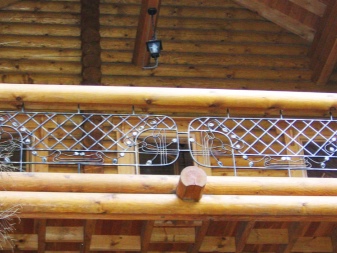
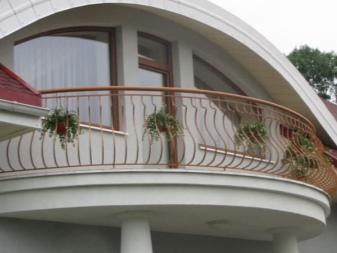
Most buyers still prefer a fairly restrained, natural color scheme. It is black, gray, or white. The colors of bronze, copper, gold or silver are considered no less popular. The balconies, decorated in the technology of patination - artificial aging of metal, look very original. This type of decoration gives the fence an antique and more noble look.
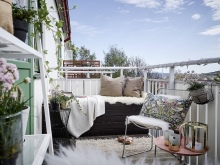
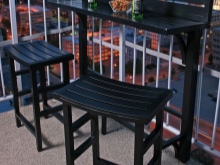
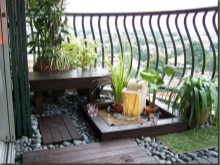
Most often, the balcony railing has a monochrome design, but sometimes decorative elements of a contrasting color are used, for example, a black lattice with an old gold patina.
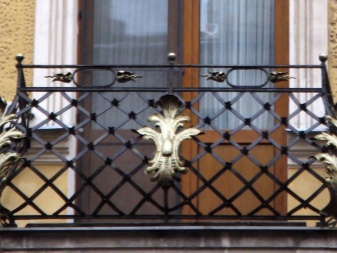
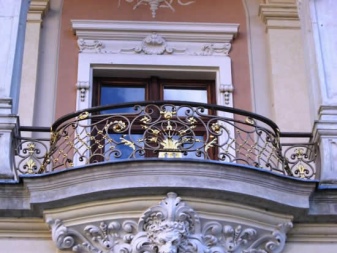
Additional decor
A wrought-iron balcony in itself serves as a worthy decoration for any facade. It doesn't matter if it is a laconic design or an openwork composition of metal rods.



Floral ornament is one of the most beautiful and attractive elements. For example, a curling vine that densely wraps around a balcony and climbs up a curved metal cord.
Another option is wicker baskets with floral arrangements. These decorations are especially used to decorate curved or circular fences.


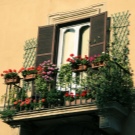

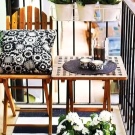
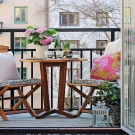
External flower girls make the openwork wrought-iron balcony even more attractive. Lightweight metal stands allow you to place several small, neat pots with lush greenery or colorful buds. Such a "hedge" will delight others for several months with a delicate, pleasant aroma and bright colors.
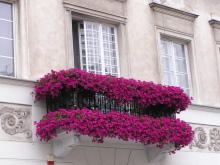
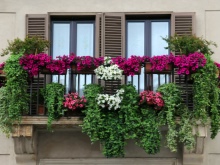
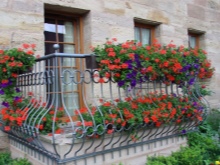
For additional decoration of a wrought-iron balcony, transparent or colored glass inserts are sometimes used. Such stained-glass windows can be decorated with small geometric elements of the lattice - circles, rhombuses, petals or larger fragments.
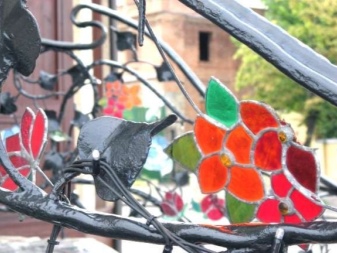
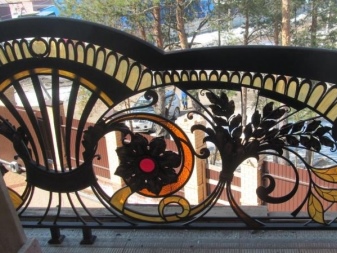
The original shape of the railings can also be part of the decoration. Wide or narrow, grooved or smooth, straight or curved - they are a complete decoration element and a functionally important part of the balcony.
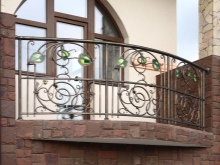


Design examples
The graceful metal construction, despite the apparent lightness and airiness, is highly durable and reliable. She will not only protect small households or pets from falling, but also create a cozy, home corner for morning tea and reading the latest press.
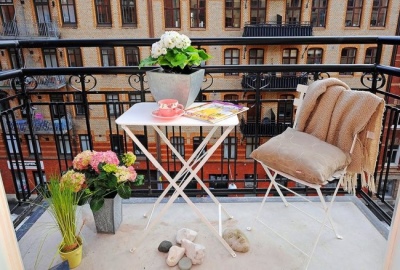
Choosing an original design of a wrought-iron fence for a city apartment, you need to build on not only your desires and capabilities, but also from the general architectural style of the building. A wrought-iron balcony in a private house is quite another matter! Here you can give room for imagination. The product can be of any size, shape, design. Houses look especially stylish, where forged elements are used not only to decorate the balcony space, but also as other decorative details of the facade.

The classic French balcony serves as a stylish, modern decoration of the facade of the building, rather than a functional and practical element. However, this also has its own charm. Airy metallic curls look very elegant and sophisticated against the backdrop of the strict classics of the building.














The comment was sent successfully.